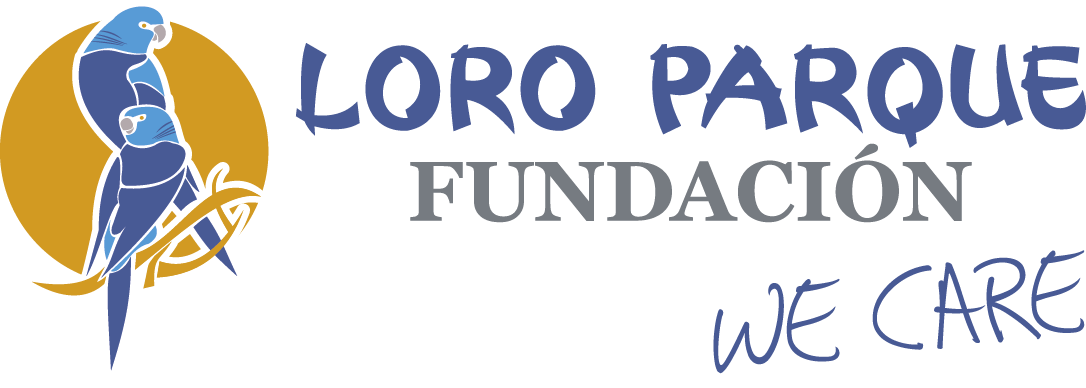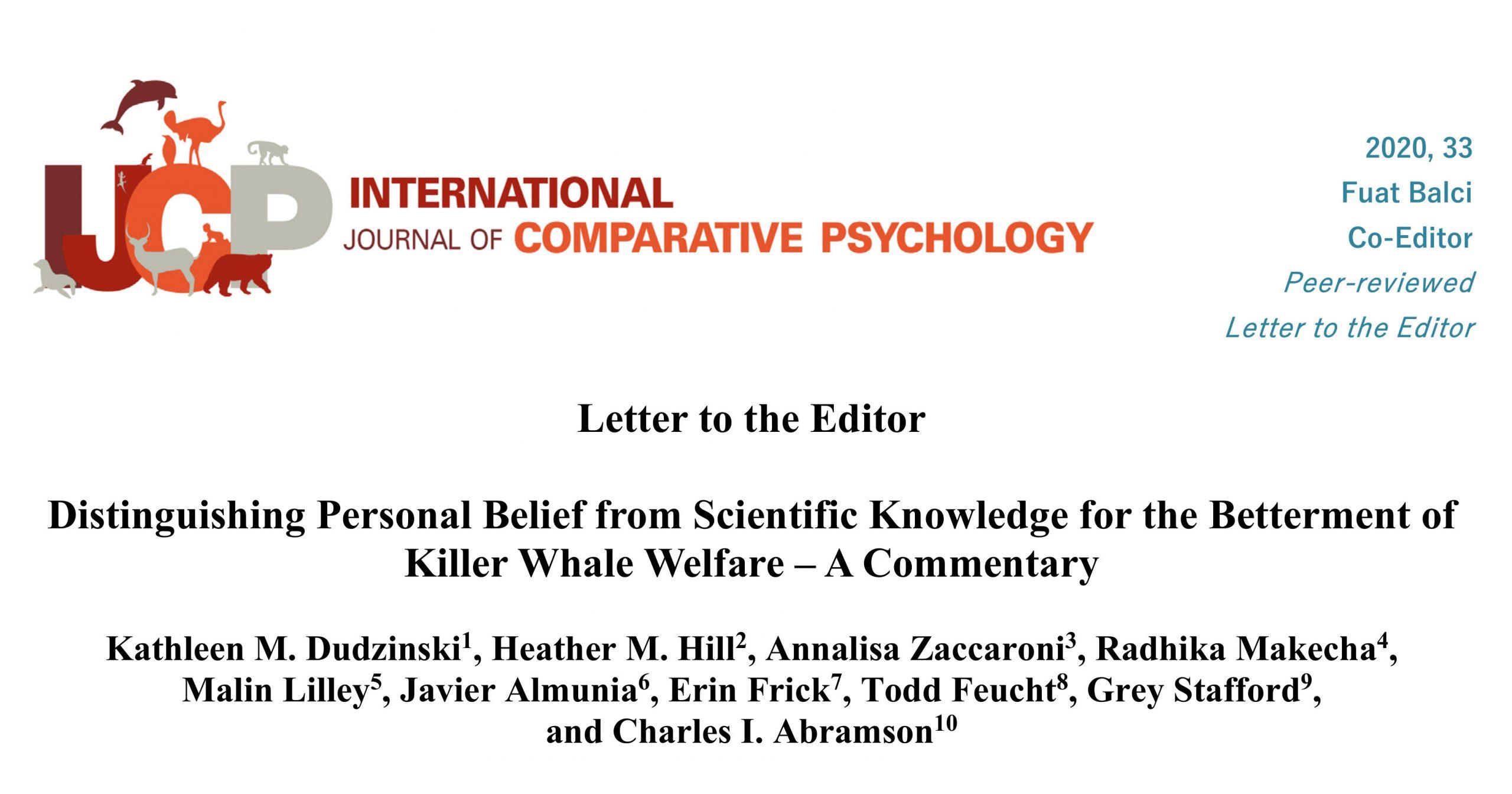We contest publication of Marino et al. (2019) regarding captive killer whale (Orcinus orca) welfare because of misrepresentations of available data and the use of citacions that do not support assertations. Marino et al. misrepresent stress response concepts and erroneously cite studies, which appear to support Marino et al.’s philosophical beliefs regarding the cetacean hyphotalamic-pituitary-adrenal axis.
To be clear, these misrepresentations are not differences of scientific opinion, as the authors’ conclusions lack any scientific basis. More extensive review of Marino et al.’s citacions reveal a dearth of empirical evidence to support their assertations. Further, Marino et. al’s approach to animal welfare is not consistent with conventional veterinary approaches to animal welfare, including their apparent opposition to the use of preventative and therapeutic veterinary interventions.
While Marino et al. argue that killer whale’s cognitive and spatial needs preclude management of this species under human care, misrepresentation of the citacions used to support this opinion invalidates their arguments. Misleading interpretations of data relative to killer whales’ cognitive and emotional needs, as well as specious and unsubstained comparisons with states experienced by humans with posttraumatic stress disorder and other conditions, represent a number of strategies used to misrepresent knowledge regarding killer whale welfare. These misrepresentations and fallacies are inconsistent with scientific ethical standards for credible, peer-reviewed journals (ICMJE, 2018) and are barriers to rigorous discourse and identification of strategies for optimizing killer whale welfare.
Assertions in the paper amount to nothing more than a compilation of conclusory, philosophical statements. We would also like to mention that manuscripts such as Marino et al.’s do great damage to the fields of comparative psychology and to behavioral science as a whole.
Access the full document here:
https://escholarship.org/uc/item/6cj9473p
| Type of Misrepresentation | Selected examples [page numbers in Marino et al. (2019) in brackets] |
| Fabrication | Marino et al. stated that “regularly prescribed prophylactic antibiotics prior to even minor repair work in the stadium adjoining her tank” (p. 17) occurred for a single killer whale at a single facility, based on an unpublished self-citation (Visser, 2016). The Visser (2016) self-citation had a single mention of a whale stadium repair, and no antibiotics appear to be listed in the document. (See Appendix 1 for more information.) |
| Distortion | Marino et al. stated that cetaceans “adhere to the classic HPA model” (p. 13) while the cited references state otherwise (for a full discussion, see the above section: Fallacies in Marino et al.’s argument that orca under human care suffer from chronic stress). Marino et al. misused a citation on use of novel objects for environmental enrichment (Sambrook & Buchanan-Smith, 1997) to support a statement that “one of the greatest stressors in the lives of captive animals is their inability to control most aspects of their surroundings and lives” (p. 17). Sambrook and Buchanan-Smith (1997) did not use the word stressor, and “stress” is only included in Sambrook and Buchanan-Smith’s list of citations. Marino et al. state that “The expansion of these areas in cetaceans is arguably associated with high-level cognitive and social functions suchas attention, prediction, social awareness and empathy” (p. 3). Neither citation used supports this statement. One of the citations used (Allman et al., 2005) is concerned with autism in humans. The second paper (Hof et al., 2005) is a self-citation, in which the words “attention,” “prediction,” “social awareness,” or “empathy” do not appear with an electronic search of the text. |
| Omission | Marino et al. state that “Gastric ulceration is often caused by prolonged stress, as well as being associated with the bacterium Helicobacter pylori (Nomura et al., 1994)” (p. 8). However, Marino et al. failed to cite the extensive number of Helicobacter-related publications subsequent to Nomura et al. (1994) indicating that the organism is generally a commensal (nonpathogenic) and that it is also found in healthy free-ranging cetaceans (for more information see above section: Are killer whales’ physical needs met under human care?). |
| Cherry picking | Marino et al.’s section on self-awareness (p. 5) does not acknowledge that contingency checking is found in many species that never pass the mark test (Anderson & Gallup, 2015; Clary & Kelly, 2016), and that a 9fish species (cleaner wrasse, Labroides dimidiatus) shows both contingency checking and passes the mark test (Kohda et al., 2019). |
| Misleading vividness | Use of terms such as “commercial trade” (p. 2), “concrete tanks” (pp. 1-3, 10, 14-19), and “tricks” (rather than trained behaviors for husbandry or enrichment purposes) (p. 18), “dead fish” (p. 11), and dental pulps that are “necrotic, infected, or hyperplastic” (p. 11), are intended to evoke negative emotional connotations. Referring to killer whale offspring as children (p. 7) invokes a human-based association instead of remaining objective. This contrasts with previous JVB publications, in which production swine are housed in “individual crates” (Oelke et al., 2018), Atlantic salmon (Salmo salar) in “transport systems” for aquaculture (King, 2009), and working therapy dogs studied in outpatient hospital settings (Clark et al., 2019). Similarly, nondomestic animals kept as pets or for exhibition were housed in cages (pet gray parrots, Psittacus erithacus; Greenwell & Montrose, 2017), cheetahs (Acinonyx jubatus) and tigers (Panthera tigris) were kept in enclosures (Phillips et al., 2017), snakes in enclosures or viveria (Warwick et al., 2019), gorillas (Gorilla gorilla gorilla) in indoor habitats (Fuller & Allard, 2018), and dolphins (Tursiops truncatus) housed in open and closed facilities (Ugaz et al., 2013). |
| Snow job | Extensive discussion of encephalization, cerebral expansion, limbic system, sensory regulation, self-awareness, emotion, and other information (pp. 2-6) that does not specifically address the question of whether killer whale experience chronic distress that compromises their welfare. Linking of killer whale welfare and killer whale attacks on humans (pp. 10, 33, 34) when they are distinct issues. |
| Draw your own conclusion/jumping to conclusions fallacy | Marino et al.’s extensive list of medical and dental diseases (pp. 8-11) with descriptions of treatments that may be intended to evoke negative connotations. This contrasts with the context and consideration of how medical and dental care is viewed for humans and other species, as well as for untreated disease in free-ranging killer whale. |
| Red herring falacies | Four types of red herring fallacies are listed below. |
| Appeal to emotion | Reference to the negative emotional experiences of post-traumatic stress disorder (p. 16), learned helplessness (p. 18), and other psychological concerns of humans without documentation on the affective states of killer whales is misleading and lacks valid reasoning. |
| Appeal to consequences | Mention of rare killer whale attacks on caretakers (p. 10) rather than acknowledgement of human-killer whale bonds or link to animal welfare consequences. |
| Appeal to nature | Marino et al. argued that killer whales must be suffering from maladaptive stress responses (p. 13) due to the absence of opportunities for extensive travel, rather than considering the elements of why killer whale travel (e.g., to forage) and how relevant animal needs could be addressed under human care. |
| Association falacies | Correlating Carnivora and killer whale behavior (p. 16) because both consume other animals, rather than accounting for different environmental and other factors. |


